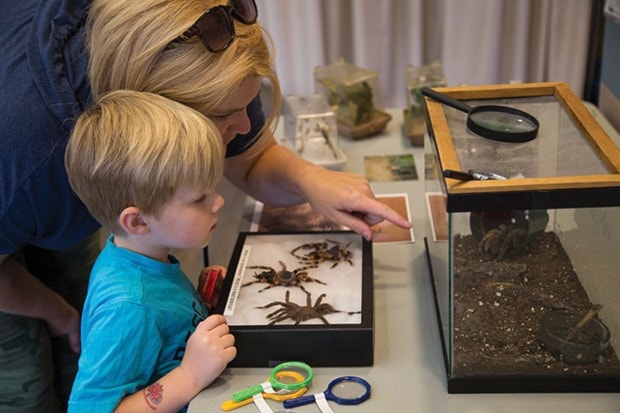Insects can be gross, but the Swan Lake Christmas Hill Nature Sanctuary has proved that even the ickiest of multi-legged bugs can also be very educational.
Last week, the sanctuary brought back its Animal Grossology exhibit, an educational program about some of the more disgusting creatures on this planet. The three-hour showing featured an array of creepy-crawlies that could make some parents shiver while piquing their children’s curiosity.
“We thought we’d capitalize on the fact that kids love things that are gross,” said Renée Cenerini, program manager at the Swan Lake Christmas Hill Nature Sanctuary.
“We focus on some of the animals that people tend to find disgusting: Spiders, snails, slugs of course. And also things like vomit and poo and slime.”
During the afternoon exhibit, about 20 kids made their own slime, pulled apart owl pellets in search of bones and examined insects under microscopes. The sanctuary also had glass display cases for tarantulas, as well as an extensive board titled “The Scoop on Poop,” detailing fun facts about feces for squirrels, muskrats, raccoons, minks, beavers and mice.
“We don’t actually bring in any real poo, but we actually have lots of cool poo facts and some rubber stimulated poo that’s in displays for kids to see,” said Cenerini with a laugh.
Every summer, the sanctuary puts on a series of special events that rotate every two weeks. Earlier this year, they’ve done Reptile Day and Insect Mania, but Cenerini said Animal Grossology is often one of the most popular displays.
“Nature is fun and we’re all about making it accessible and bringing families together,” she said. “If you can make it appealing enough for the kids to be really excited about it, then usually the adults come around too.”
The sanctuary has one last drop-in event for August, titled Astounding Amphibians, which will examine everything from frogs to salamanders to newts. The final event runs on Aug. 19 from noon to 3 p.m., with admission by donation.
